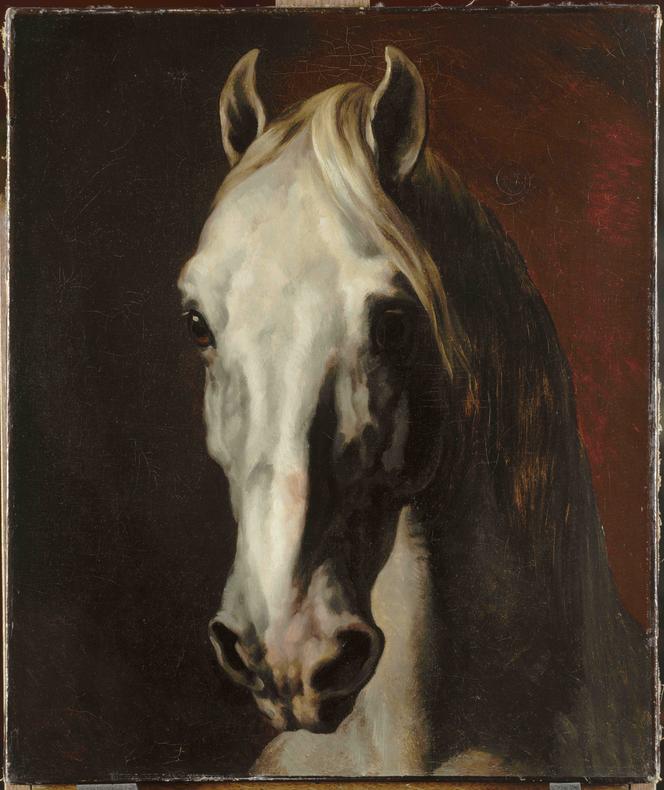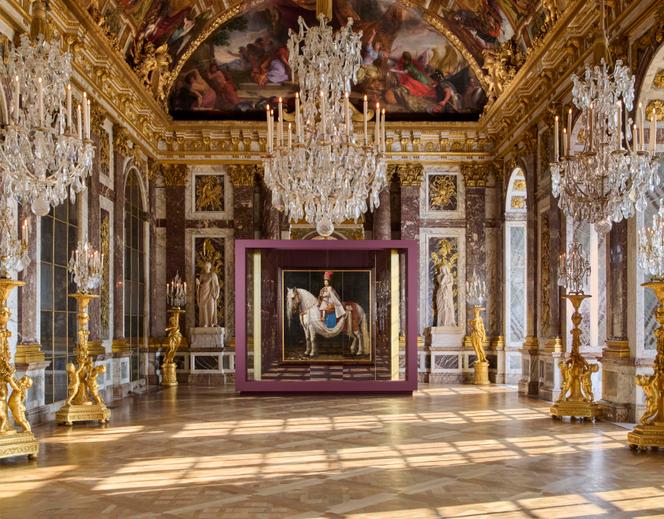


What could the animal be thinking, with its gaze, a mixture of curiosity and anxiety, fixed on ours? Painted by Théodore Géricault (1791-1824), the Tête de Cheval Blanc ("White Horse's Head") is a good illustration of the fascination painters had for these enigmatic creatures. The artwork is on display at the Château de Versailles, as part of a wide-ranging exhibition entitled "Cheval en Majesté" ("Horse in Majesty") which explores four centuries of equestrian art, from the Renaissance to the early 20th century. The exhibition unfolds through around 10 of the palace's salons, with around 300 works on display.
Organized for the Olympic and Paralympic Games – the château's park hosted the equestrian events – the exhibition will run until November 3. Visitor numbers are likely to surge with the surprise arrival of Zeus, the silver mechanical horse that thrilled spectators during the Olympics' opening ceremony with its procession on the Seine: After being displayed in the courtyard of the Paris City Hall, Zeus will take up residence at Versailles from October 1.
The location probably influenced the curators' choice to focus the exhibition on court life, art and war rather than domestic life or work in the fields. The horse is depicted with the same grandeur as the monarchs who once occupied the place. From the very first room, several horses stand proudly, manes blowing in the wind like Kortom, or neatly groomed like Sultan, painted life-size on monumental canvases.
These horses were favorites of Charles XI of Sweden, who had them immortalized by David Klöcker Ehrenstrahl (1628-1698). Louis XIV also cherished his horses – his stables included up to 2,300 of them – whose names, listed in the royal household register, reflected their character – Le Commode ("easygoing"), Le Charmant ("charming"), Le Pompeux ("pompous"), and so on. As for Marengo, portrayed by Jacques-Louis David (1748-1825) in his famous painting Bonaparte Franchissant le Grand-Saint-Bernard ("Napoleon Crossing the Alps"), he became almost as famous as his rider.

"The noblest conquest ever made by man over the brute creation, is the reduction of this spirited and haughty animal, which shares with him the fatigues of war, and the glory of victory [...] He feels pleasure also in the chase, and in tournaments; in the course he is all fire," wrote Buffon in his Histoire Naturelle (Natural History, 1749-1789). For celebrations, the animals were lavishly adorned, demonstrated by a ceremonial velvet saddle embroidered with silver, a diplomatic gift from Louis XIV to the King of Poland, Auguste le Fort, and another in silk velvet woven with gold and silver thread, presented to Charles XI of Sweden.
You have 53.06% of this article left to read. The rest is for subscribers only.
